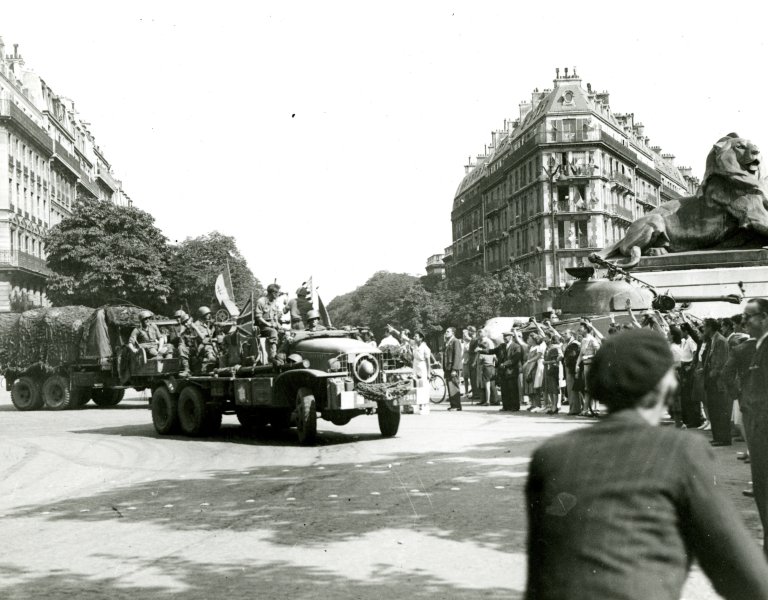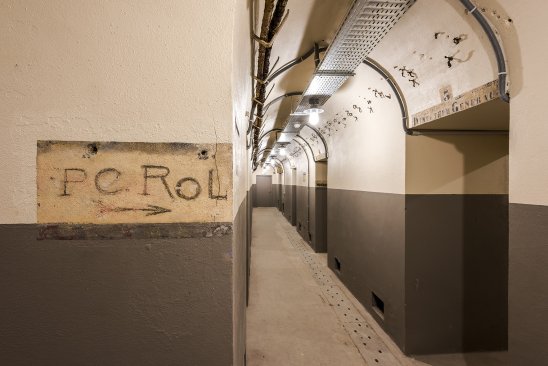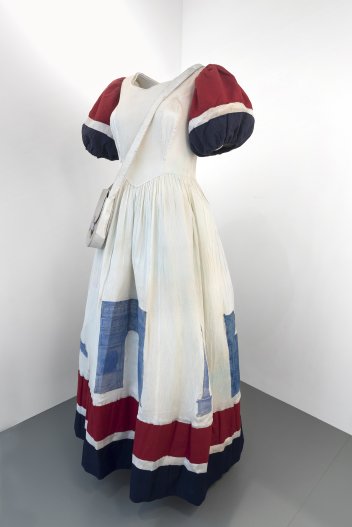
5 things to know about the Liberation of Paris
25 August 2021 marks the 77th anniversary of the Liberation of Paris! The musée de la Libération de Paris - musée du général Leclerc - musée Jean Moulin will make you relive this critical moment in history and reveal the secrets of the episode through its history-charged collections and strategic setting in Place Denfert-Rochereau. Here are 5 reasons why a visit to the museum is a must!
1. A key site in the Liberation of Paris is hidden beneath the museum
The intention behind the museum’s choice of Place Denfert-Rochereau as its new location was to offer its visitors a unique experience: a visit to Colonel Rol-Tanguy‘s command post, sheltered 20 metres below ground. This is where the shelter – built in 1938–39 for the technical services of the City of Paris’s administration – was hidden, though it was not really used until August 1944, thereby allowing the head of the Paris region of the French Forces of the Interior (FFI) to give his orders for the Liberation of Paris.

Le poste de commandement du colonel Rol-Tanguy pendant la semaine de la Libération de Paris est situé sous le musée. © Photo Pierre Antoine, Paris musées
2. A difficult negotiation
The Liberation of Paris owes much to General de Gaulle. It was he who succeeded in convincing the American general, Dwight D. Eisenhower, not to bypass Paris. Eisenhower thought that devoting time to liberating Paris would slow down his troops on their way to ensuring Germany’s surrender. In the end, Eisenhower was convinced, Paris was too symbolic, as well as being strategic.
General Leclerc, after whom the avenue leading to the museum is named, immediately set out to liberate Paris.
There were many clashes with the Germans but finally a column under the command of Captain Dronne succeeded in entering Paris on the evening of 24 August 1944.

Rencontre de De Gaulle et Eisenhower le 20 août 1944, au pc tenu secret d’Eisenhower en Normandie © Images NARA
3. General Leclerc, a liberator in an American uniform
One of the most famous figures of the Liberation, General Leclerc was a rebel with a historic destiny. Having escaped from the Germans in 1940, he went to England where he met de Gaulle who sent him to Africa; his troops, a veritable “poor man’s army”, lacked equipment. In 1943 these men formed the core of the “2nd Armoured Division” (2AD) under American command. It landed in Normandy on 1 August 1944. Leclerc was given the mission of liberating Paris.
Photographs of the 2nd Armoured Division’s passage through Paris on 25 August, surrounded by crowds of jubilant Parisians, can be seen in the museum presentation.

La 2e Division blindée équipée par l'armée américaine © Photo Pierre Antoine, Paris musées
4. The forbidden flag

Robe tricolore de Marguerite Sabaud, décorée avec des monuments parisiens, 26 août 1944 © Photo Pierre Antoine, Paris musées
Did you know that the French flag was completely forbidden in the German occupied zone?
The Liberation was therefore an ideal time to bring out any object and fabric coloured with the red, white and blue of France.
The museum has a collection of them and exhibits many of the objects and accessories that allowed the Parisians to display their colours with pride.
It also has a tricolour dress, sewn by a talented French woman, allowing her to parade patriotically through the liberated city. You can just imagine how she was cheered and complimented!
5. And women?
The place and role of women during World War II and the Liberation of Paris are today beginning to achieve recognition. They were of course active on all fronts: in the army, the Red Cross, the Resistance...
The Libération de Paris – musée du général Leclerc – musée Jean Moulin is busy on a project to bring them to attention through various documented portraits.
There are many names to be (re)discovered: Madeleine Colomb, Rochambelle in the 2AD; Cécile Rol-Tanguy, wife of the colonel and liaison officer; Madeleine Riffaud, a Resistance fighter who killed a German on Solferino Bridge; Anita Dalmaso, who participated in the Liberation of Paris, among others.

Secouristes place de l’hôtel de ville, le 25 août 1944 © Coll. Gandner, Musée de la Libération de Paris – musée du général Leclerc – musée Jean Moulin (Paris musées)
Further information
Musée de la Libération de Paris - musée du général Leclerc - musée Jean Moulin
4 Avenue du colonel Henri Rol-Tanguy, 75014 Paris (Place Denfert-Rochereau)
www.museeliberation-leclerc-moulin.paris.fr
-
From 25 August to 15 September, a tribute to the former Resistants and soldiers of the 2nd Armoured Division who died during the Covid crisis will be presented to the public.
-
For more info on the visit (free or mixed reality) of Colonel Rol-Tanguy’s command post
-
Good news for sculpture-lovers: from 1 October 2021, the exhibition “Rol-Tanguy par Giacometti” will show portraits of the colonel by the famous Swiss artist.